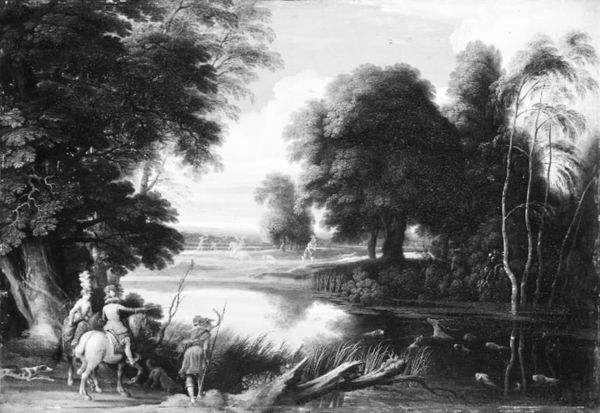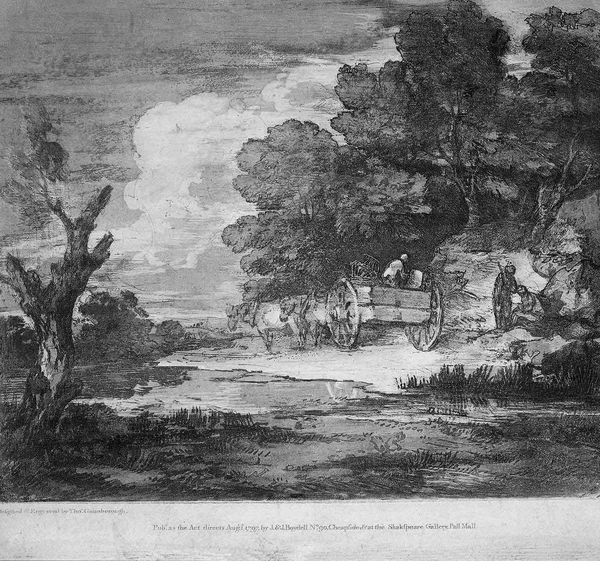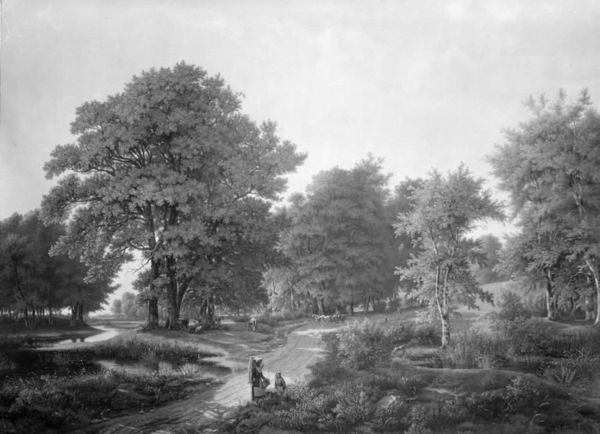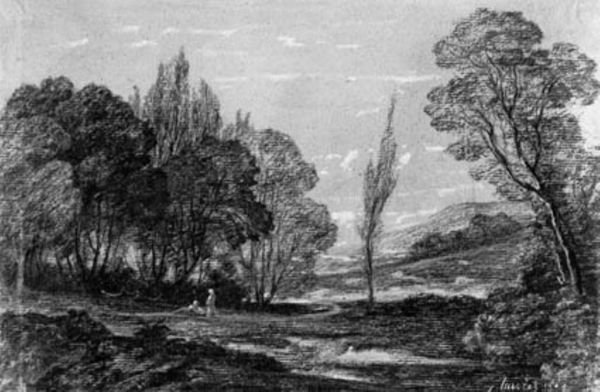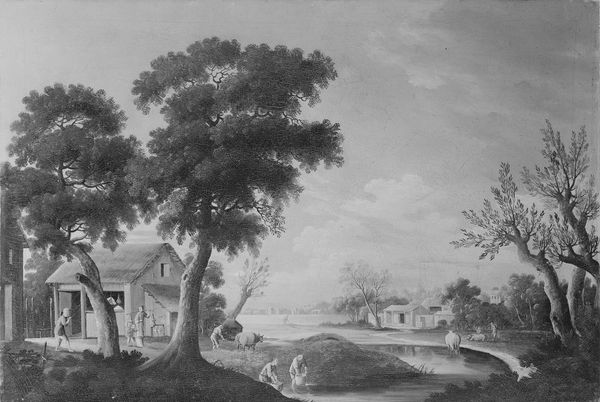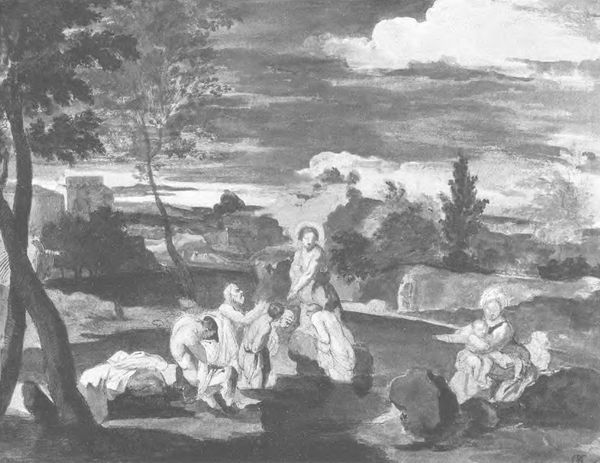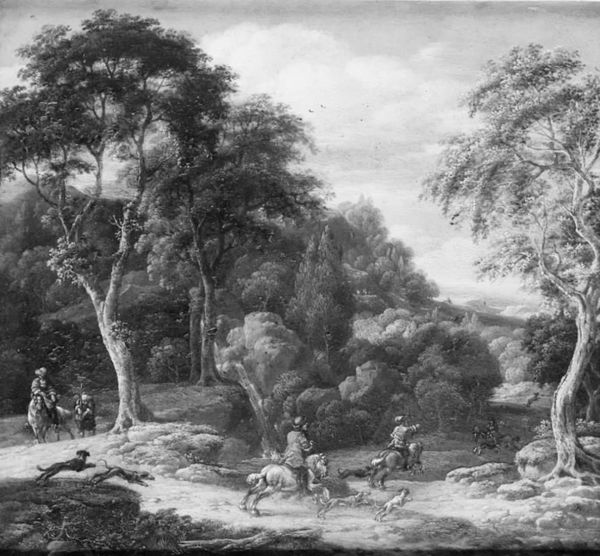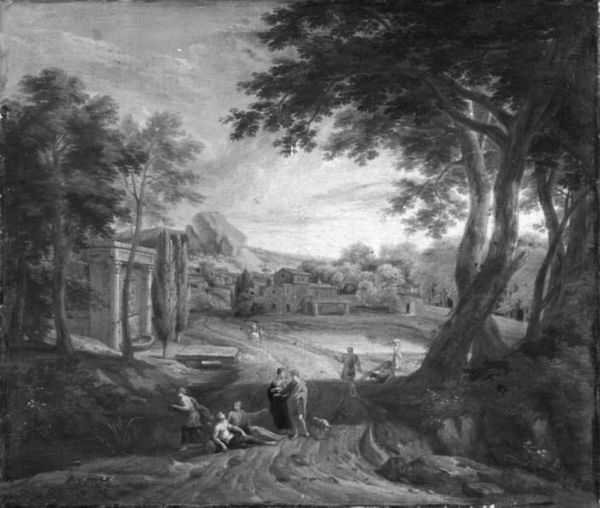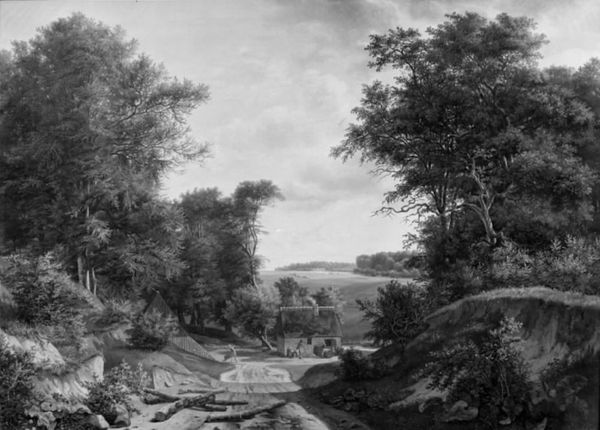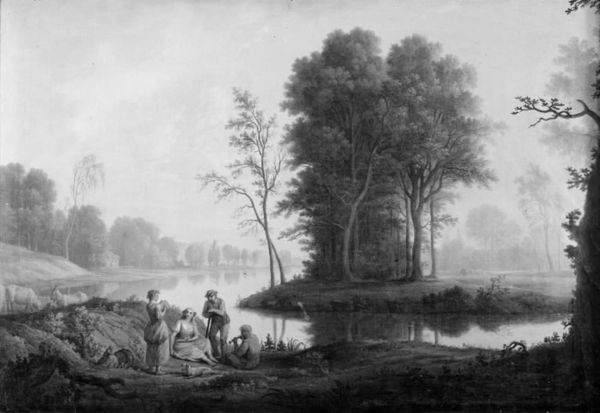
wood
#
solitude
#
amateur sketch
#
natural shape and form
#
rough brush stroke
#
countryside
#
incomplete sketchy
#
charcoal drawing
#
rugged
#
charcoal art
#
wood
#
charcoal
Dimensions: 15.6 cm (height) x 21.9 cm (width) (Netto)
Curator: Ah, look at this beauty! We're gazing upon "Landskab med mytologiske figurer," which roughly translates to "Landscape with Mythological Figures". Attributed to Adam Elsheimer, though the dating’s a bit hazy, placing it somewhere between 1587 and 1710. It’s a charcoal drawing on wood. What strikes you first? Editor: The melancholy. The overall composition exudes this quiet solitude, almost like a dream half-remembered. It feels both inviting and remote, with these...ethereal figures positioned at the edge of a deeply wooded area. The stark contrast between the figures and their background. Curator: Exactly! The starkness emphasizes the human figures within the overwhelming power of the landscape. Elsheimer plays with light and shadow, pulling our gaze toward them, despite the rather…sketchy execution. Almost amateur, really. There's a definite tension between idyllic nature and slightly awkward figures. Editor: Sketchy, yes, but with intent. Consider the application of charcoal: raw and immediate with bold outlines. Elsheimer uses the charcoal less to define than to evoke. He focuses on texture—rough bark, wispy foliage—which adds to the emotional weight and contributes a dramatic effect, and perhaps points at natural forms overpowering an era? Curator: Perhaps you're on to something. He certainly liked playing with convention. His miniatures were famed for being hyper-detailed, gems, so maybe here the looser application is the very story, an epic tale unfolding through whispers of charcoal. Editor: Think about how the rugged, incomplete brush strokes capture the essence of the countryside without romanticizing it. He doesn't offer escapism; he is making us to confront something profound and potentially harsh. And that sense of amateur sketch that initially registered, feels purposeful as it adds a vulnerability to the viewing experience. Curator: You know, reflecting on it now, there’s a certain freedom in the work’s perceived “imperfection." Almost, daring I say, the work is liberated as opposed to shackled down. Maybe this freedom extends to those figures? As the viewer you find you are in the painting as much as the work allows you to observe. Editor: Precisely! It shows a countryside occupied with nature’s elements rather than anything manufactured. A nature full of spirit, alive with its ruggedness and its incomplete form. Curator: Thanks for spotlighting a work that continues to fascinate and, now, maybe teaches us a bit about art as a freeing force as opposed to just formal construct. Editor: An absolute pleasure, allowing space to reconsider initial judgement and see beauty through technique.
Comments
No comments
Be the first to comment and join the conversation on the ultimate creative platform.
